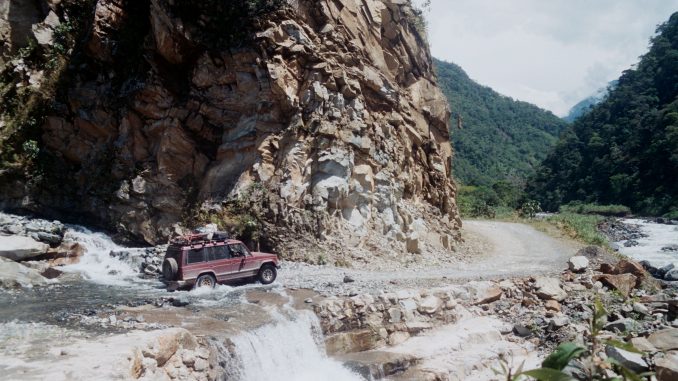
From Porto Velho in Rôndonia to Assis-Brasil was a one and a half day drive on spectacularly good deserted road. The first night we stopped at Brasiléa, a crossing point into Bolivia. In the morning we crossed into Bolivia to buy some very cheap gas then pushed on for the Peruvian border.
The Brazilians have built a gateway to the Pacific complete with road signs giving distances to the Peruvian cities of Cusco, Lima and the Pacific Ocean. At Assis-Brasil Brazilian plans met Peruvian reality. We drove off the “Estrado do Pacifico” and onto a dirt road prompted by a sign that read: “Bridge to Peru,” Unfortunately, the dirt road petered out at a building site where a bridge was under construction. We were about a year too early and had to return to the town to look for alternative crossing points.
The border between Brazil and Peru here is a small river. Water levels were very low awaiting the start of the rainy season. Peruvian taxis parked on dry sand banks on the other side touted for trips to Puerto Maldonaldo by shouting across the river to prospective customers. The pickings were small as few travelers come this way because there is no public transit out from Puerto Maldonaldo to the rest of Peru except by air.
I only needed to cross about twenty meters of water less than a meter deep. I was tempted to drive it but didn’t want to deal with wet carpet. I decided I needed a little help and consulted with the ferryman. He suggested that we use two canoes but I countered that my vehicle was top-heavy and might fall off. I suggested we use the floating platform moored nearby instead. This proved to be a complex and expensive procedure which made we wish I had driven across.
The first time I tried to mount the vehicle onto the floating platform that had been maneuvered into place, the planks cracked and the vehicle shuddered forward and down. I had to reverse off them while the ferrymen searched for more planks so we could try again. The second attempt proved successful. The planks groaned but held; I mounted the platform successfully. I was instructed to reverse my car to the back of the platform to shift the weight so that we were not grounded in the sand. The single motor on the canoe pushed us across the absurdly short distance to the other bank.
There remained the small matter of driving off onto the sandbank on the other side. The planks were re-arranged and we had attracted quite a crowd of onlookers. All went well and I was happy to be off. We paid our ferryman his hard earned fee and we drove into Iñapari, the Peruvian town on the other bank, to get our entry visas and a permit for the vehicle. We were the only traffic so this proved a relatively simple procedure even on a Sunday.
Within an hour we were on our way. From Iñapari it is 170km of dirt road to the river at Puerto Maldonaldo, the main town in this jungle region of Eastern Peru. The dirt road was wide and dry, and the first 100km having been recently improved, the result of a bilateral agreement with Brazil. Traffic was expected with the new bridge from Brazil and as usual funding was offered by the Brazilians so that their trucks might have access to ports on the Pacific — a dream not yet quite reality. It was late in the evening so we stopped in a large sleepy town to recharge our batteries for the long drive the following day. I wanted to get as many kilometers under our belt as possible as the rainy season was imminent and we had passed through some heavy rainfall in southern Brazil already. Just one inundation could add days if not weeks to this trip.
The road from Iñapari to the crossing to Puerto Maldonaldo was excellent for the first 100km or so, that road being built by the Peruvian Federal government. The last stretch was very rutted and I was very glad that it had not rained recently. This bad stretch was to be improved by the local authorities but the monies for construction has mysteriously vaporized leaving this mess. Local authority corruption is endemic in most countries including my own but is particularly bad in Latin America. The Peruvian papers report that Peru’s international index of corruption had come perilously close to 3.0, considered the point at which corruption is so endemic as to be almost impossible to fix.
We arrived at the port and could see the town of Puerto Maldonaldo on the other side. I drove down the ramp and quickly passed to the other side on a makeshift single car ferry made from a platform mounted on two canoes. This time the planks were wider and made of thick mahogany. We got across in two shakes of a lamb’s tail.
After breakfast we set off from Puerto Maldonaldo eagerly awaiting our first glimpse of mountains since southern Venezuela. We had been months in the jungle and the prospect of cool air was as alien as it was delicious. In the early afternoon we started to climb and the road suddenly became very narrow and steep, switchback after switchback best taken in 4WD low.
Instead of bridges to span the numerous smaller rivers, the road simply dropped into the river and we drove through, choosing our crossings with care to keep the carpets dry. I was more confident of my four-wheel drive capabilities as Mitsubishi Porto Velho had replaced some essential parts of the front hubs that were faulty. This problem had made my previous week such hell. Instead of traveling in four-wheel drive, we were really driving in rear wheel drive at slow speeds. The faulty parts, now replaced, had meant that pressure was insufficient to engage the front hubs in low speed so our front wheels couldn’t pull us out. This worn part had meant many days in the hellish puddles that had been my nemeses on BR319.
Progress was slow but effective and we never got stuck that day crossing various rivers and climbing and descending many mountains to arrive in the evening at the jungle town of Inambari a town filled with trucks. It was time for us all to sleep, even experienced drivers who know the road do not drive it at night. I found it strange that about half the traffic on the road consisted of fuel tankers so I decided to seek an explanation. A chance conversation with some Californian tropical fish collectors, residents of Puerto Maldonaldo, clued me in.
Puerto Maldonaldo was a reasonable sized town cut off from the rest of Peru in the wet season. Its economy revolves around the hardwood and gold mining industries of this appropriately named “Madre de Dios” region. The town’s electrical power is provided by a diesel generator. In the dry season the roads are full of diesel trucks traversing the Andes with small loads of diesel to replenish town diesel supplies ostensibly to keep the lights on. If they can’t get through diesel needs to be flown in to supplement the precarious supply. This ridiculously inefficient solution to providing electrical power was so typical of the remote border regions of smaller countries in Latin America. Loath to look to their richer neighbors to provide electrical power in a more efficient way they resort to traditional methods of self-sufficiency. With all of the fast moving water one would expect that some bright spark would look to hydroelectric power to provide electricity. Brazil, just across the river supplied most of its grid this way, but this is Peru!
As it turns out the economics of diesel power generation had a perverse logic all of their own.
Diesel tankers in these Amazon regions are built differently to those we are familiar with in other countries. They carry only about half the quantity of diesel and have a capacity to take freight in a compartment above the tanker typically used when the tank is empty. As it turns out this was the real reason that there were so many tankers on this Andean pass. They were an essential component in the illegal mahogany trade that is rapidly stripping the Amazon forests in this area. The tanker traffic provides an inefficient but covert method for trafficking these huge planks from the jungle where they are cut illegally to the sawmills near Cusco. The tankers pass through locally controlled checkpoints, pay an agreed minimal bribe and take their loads over the mountains to hardwood-starved markets of the world.
That these trucks managed to drive this road with their two-wheel drive capability was testament to the extraordinary effectiveness of greed.
That night I was awoken around 2:00AM by a tropical lightening storm bringing heavy rains and snow at higher altitudes. I lay awake thinking of the river crossings ahead, my paranoia of driving through water in full effect. I finally fell back to sleep to awake at dawn. The next day was a hard drive out of the jungle and into the zone of the Cloud People who live above the tree line. These Quechua-speaking tribespeople have farmed these extraordinarily steep slopes on both sides of the Andean continental divide since the area was ruled by the Incas and probably before. They still live pretty much as they have for centuries growing vegetables, coca and corn, and farming alpaca, sheep and hairy black and white spotted pigs.
It was a good travel day and we covered more than a 150km ascending to 2,500m. That night we experienced cold air for the first time in almost a year. We slept in the nest of the clouds in the town of Marcapata. Up early the next day we were eager to get back on the road. I finally got over my rain phobia and relaxed that we were out of the worst of the Amazon basin, if anything was to stop us now it was unlikely to be rain.
As advised by a young road-building engineer we had met the night before, I acquired some coca leaves to chew as we drove into the snowy passes of the continental divide. Coca leaves are a natural medicine used to counteract altitude sickness and we were to pass above 4000 meters. We stopped to take photos and throw snowballs at the peak and began a rapid descent, which took all of the rest of the day. It was October 20th 2004 and we had been on the road for more than two extraordinary weeks. We were happy to sleep in Cusco a town connected to others by asphalt, the car parked in safe parking not to be driven for days at least. We had made it relatively intact.
It was time to rest and recover, to contemplate this extraordinary journey and to write this article.

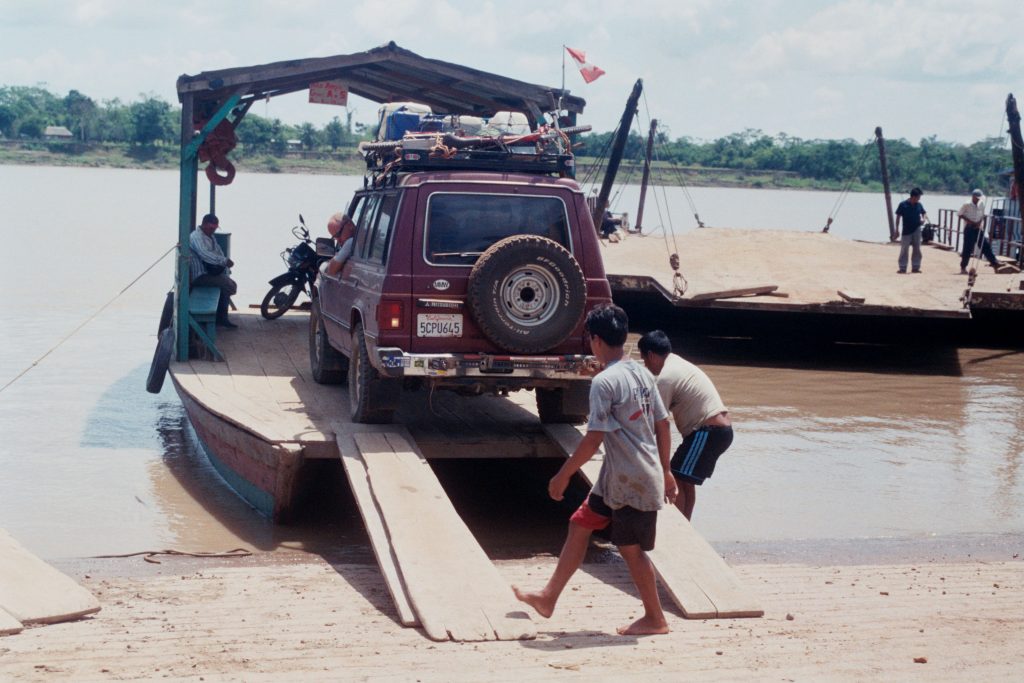
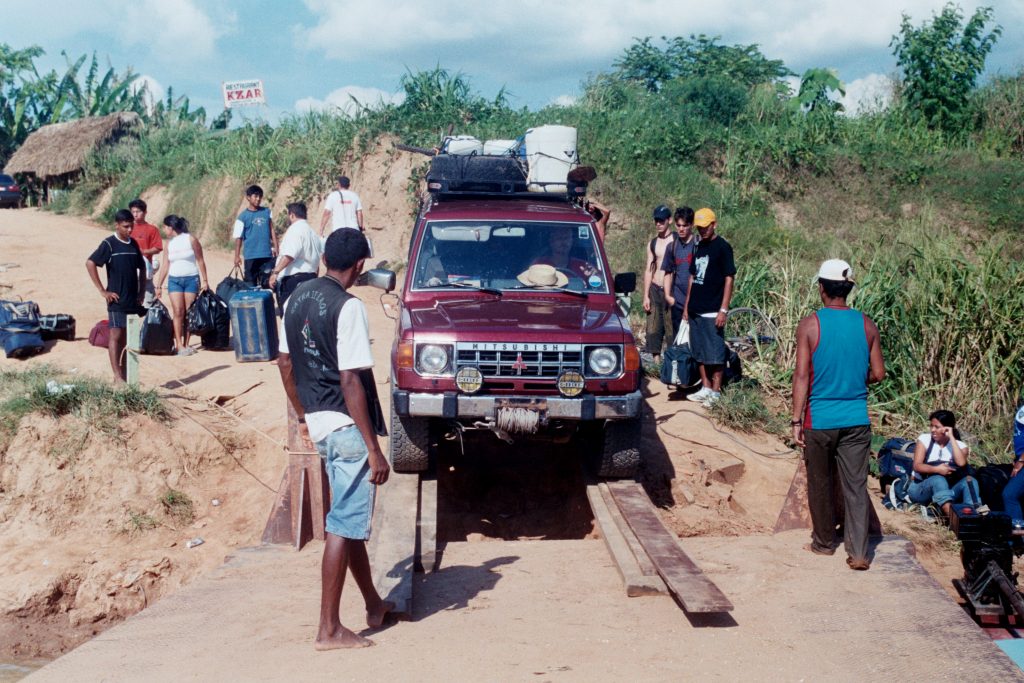

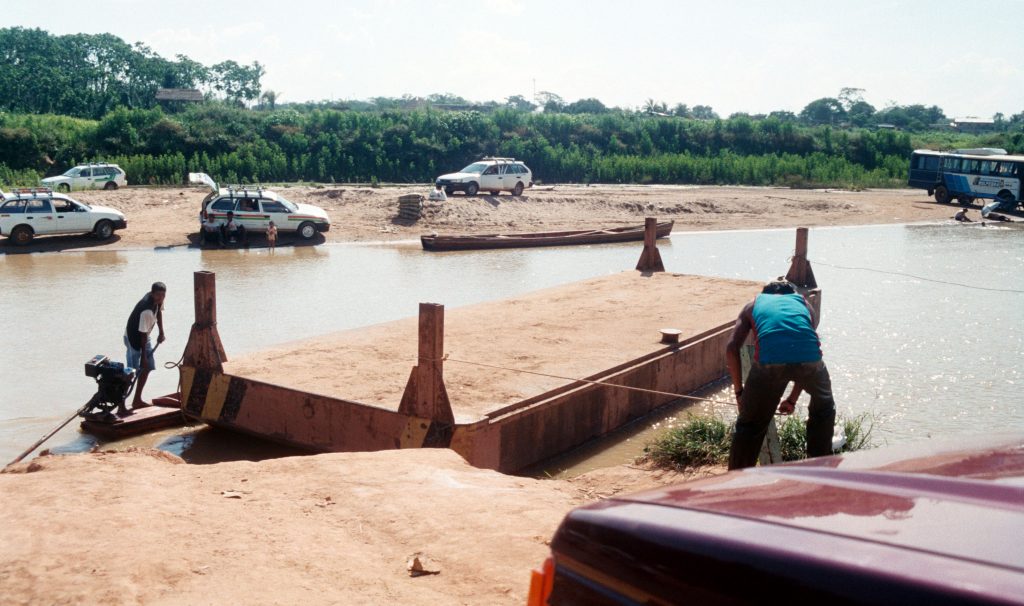
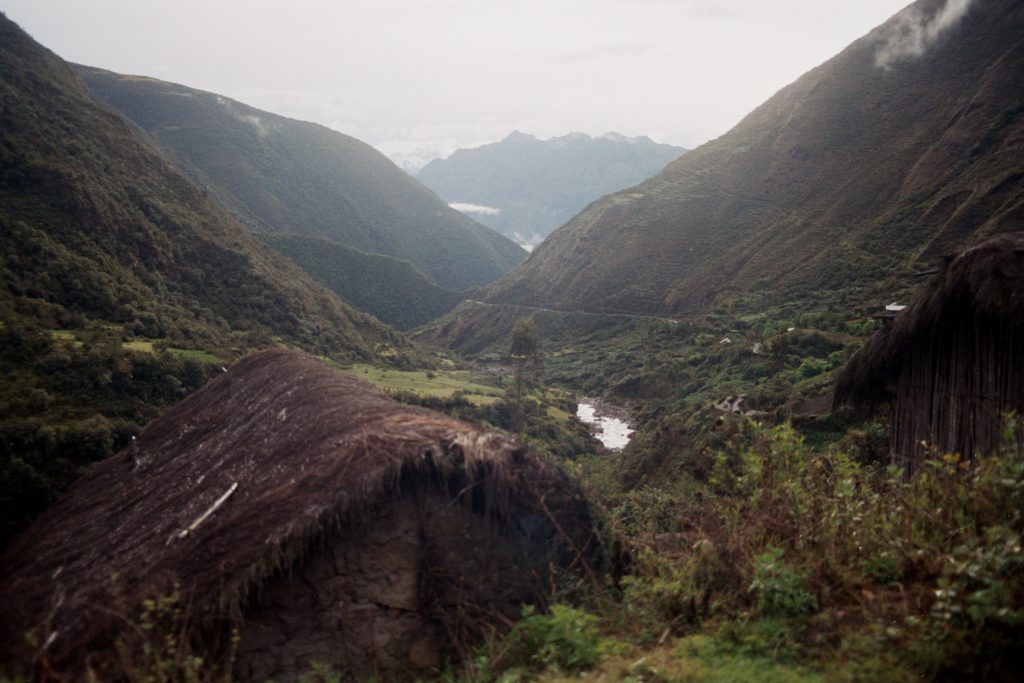
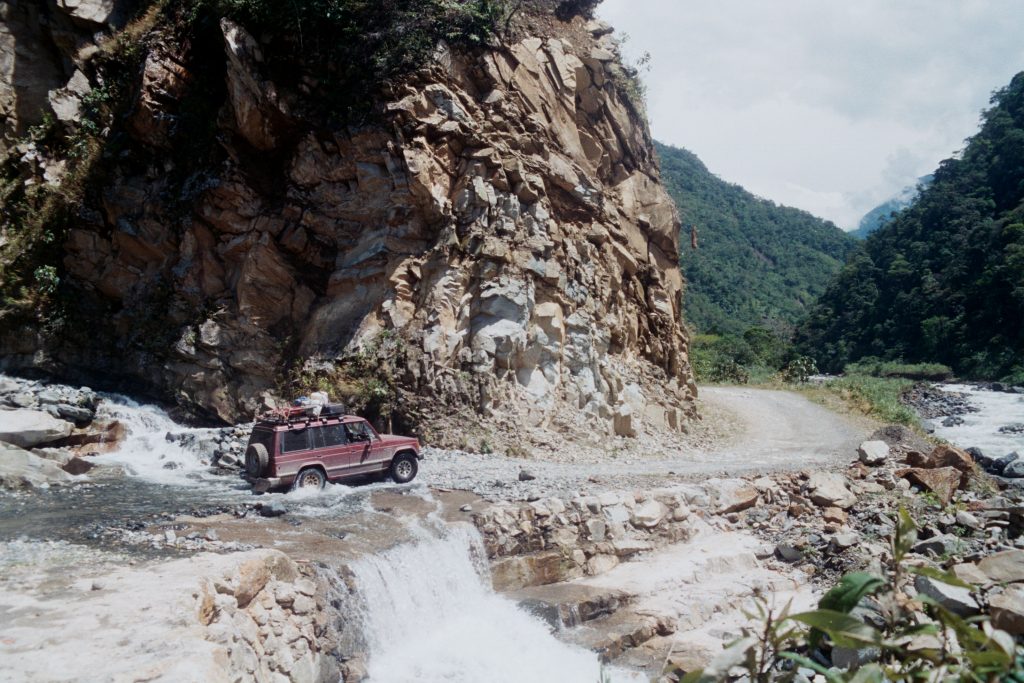
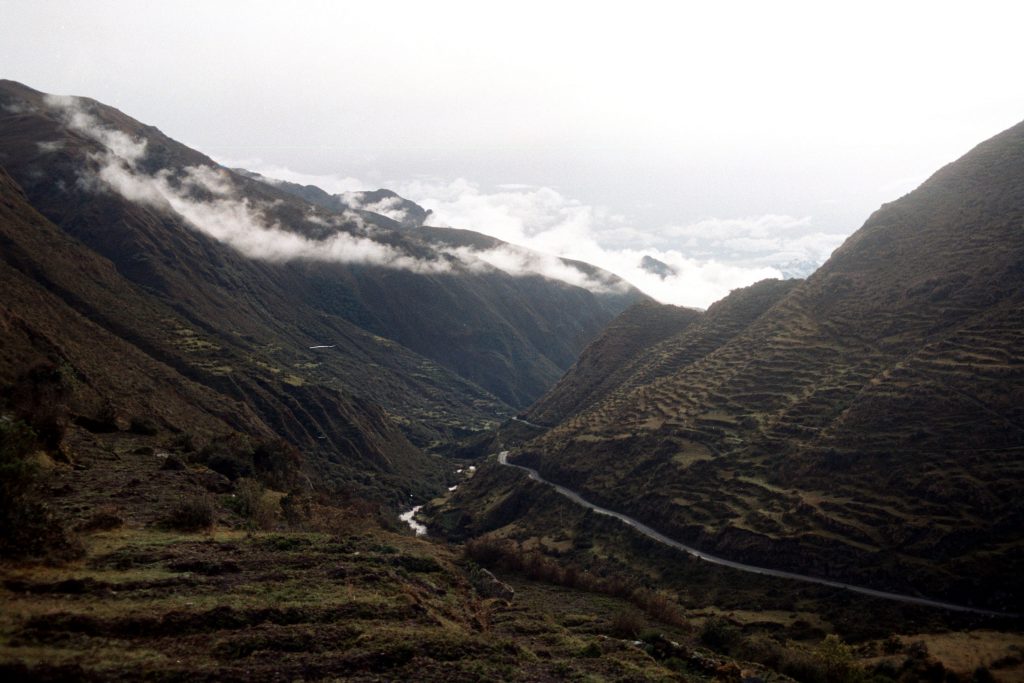
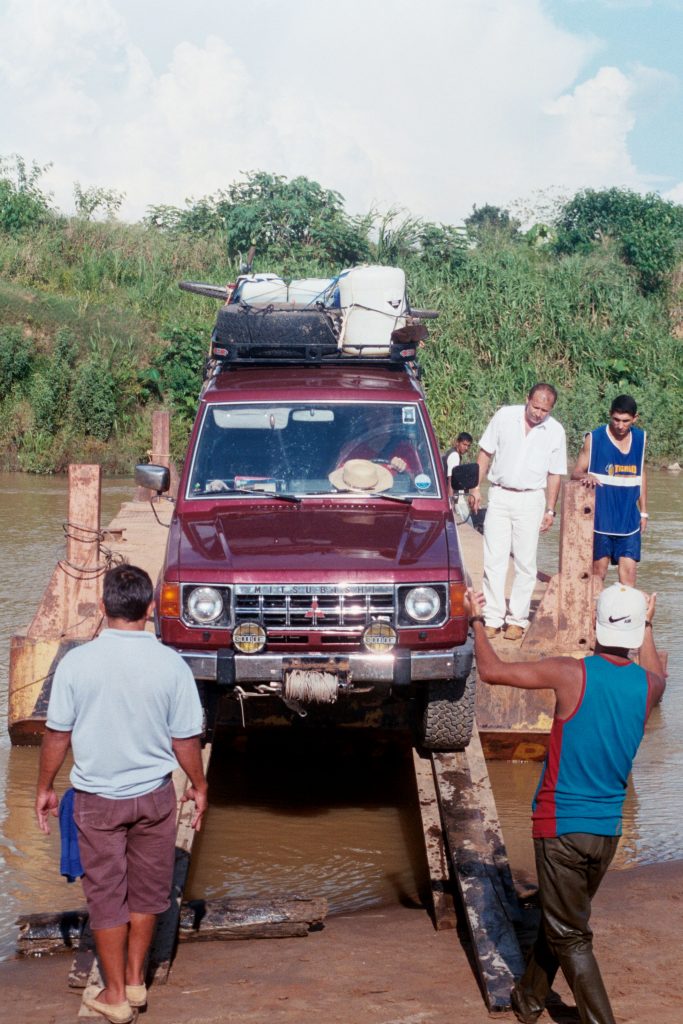
Leave a Reply